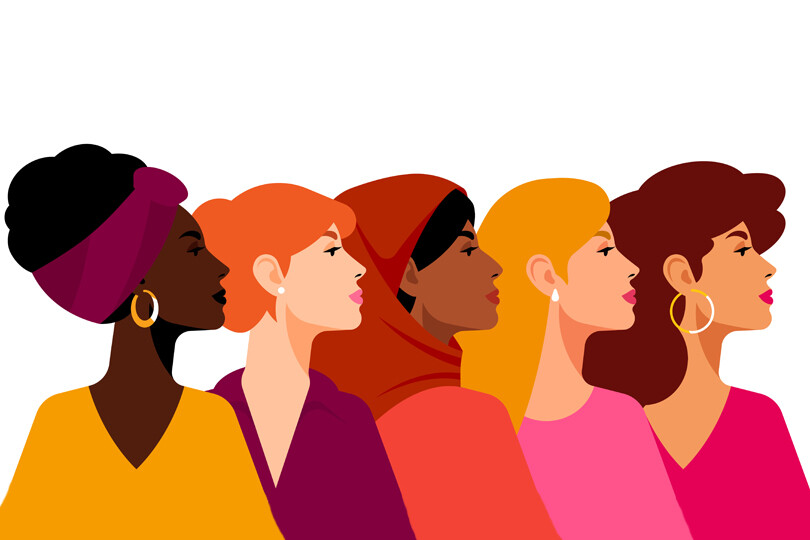Every year International Women’s Day is celebrated around the world on March 8. The day is not only about celebrating women’s achievements in all areas of life, but also a way to bring attention to the social, political, economic and cultural issues women face, and to advocate for the advancement of women within all those areas.
As the organizers of the celebration state, “Through purposeful collaboration, we can help women advance and unleash the limitless potential offered to economies the world over.”
The day, and the women’s rights movement, have undergone vast changes in the past 100 or so years…. Here’s a brief look back at the history of International Women’s Day.
The first celebration
Although important women’s rights groups and movements began to mobilize during the 19th century all over the world, it wasn’t until the early 1900s that big changes began to happen.
The first Women’s Day observance, called “National Woman’s Day,” was held on February 28, 1909, in New York City, organized by the Socialist Party of America at the suggestion of activist Theresa Malkiel. There have been claims that the day was commemorating a protest by women garment workers in New York City who were asking for shorter working hours, equal wages and voting right, but over the years researchers have described this connection as a myth.
Following this, in 1910, an international conference for working women was held in Copenhagen, Denmark. It was during this Socialist International conference that German delegates Clara Zetkin, Kate Duncker, Paula Thiede and others proposed an annual commemoration of ‘Women’s Day’ in order to promote equal rights. No date was specified at that conference, but 100 delegates from 17 different countries agreed with the idea as a strategy to promote equal rights (including suffrage) for women.
The following year, on March 19, 1911, the first International Women’s Day – or, as it was first called, International Working Women’s Day – was celebrated with rallies in Austria, Denmark, Germany and Switzerland. More than one million women and men attended the rallies campaigning for women’s rights to work, vote, be trained and hold public office, and for an end to discrimination.
Less than a week later, on March 25, the Triangle Shirtwaist Factory Fire took place in New York City; more than 140 women and girls died, most of them Italian and Jewish immigrants. One of the deadliest fires in the history of the United States, it drew significant attention to the working conditions and labour legislation in the country, and became a focal point of subsequent International Women’s Day events.
Celebrations often included marches and other demonstrations. The first one in Russia was observed on February 23, 1913, while American women continued to celebrate on the last Sunday in February.
The day was predominantly celebrated in communist countries, but in the following years, similar events began to spread across the globe. Generally spearheaded by socialist women, demonstrations called for women’s rights and female suffrage, and many feminists readily joined their socialist sisters.
The event was finally made ‘official’ in the mid 1970s when it was celebrated for the first time by the United Nations in 1975. In 1977, the United Nations officially got behind the annual honouring of women’s rights and invited member states to proclaim March 8 as International Women’s Day, a recognized day “to reflect on progress made, to call for change and to celebrate acts of courage and determination by ordinary women who have played an extraordinary role in the history of women’s rights.”
Colours
Purple, green and white – the official colours associated with International Women’s Day – harken back to the women’s suffrage movement in Britain. Purple signifies justice and dignity. Green symbolizes hope. White represents purity, albeit a controversial concept. The colours originated from the Women’s Social and Political Union (WSPU) in the UK in 1908.
Theme
Every International Women’s Day since 1996 has had a theme. The first was “Celebrating the Past, Planning for the Future,” followed by “Women at the Peace Table” in 1997. In 1998 the theme was “Women and Human Rights,” while in 1999 “World Free of Violence Against Women” was the theme. More recent themes include: #PledgeforParity (2016); #BeBoldforChange (2017); #PressforProgress (2018); #BalanceforBetter (2019); #EachforEqual (2020); #ChooseToChallenge (2021); #BreakTheBias (2022), and “DigitALL: Innovation and technology for gender equality” (2023) .
This year’s campaign theme for International Women’s Day 2024 is: Inspire Inclusion. When we inspire others to understand and value women’s inclusion, we forge a better world. And when women themselves are inspired to be included, there’s a sense of belonging, relevance, and empowerment. The theme encourage us to create a more inclusive world for women. (You can read more about a definition of what it means to inspire inclusion here.)
International Women’s Day is more than just a celebration – it’s a global day for us to come together as powerful allies who strive towards achieving true gender equality worldwide. No matter how you choose to recognize this day, remember that every action counts towards creating a better future for all women everywhere!












